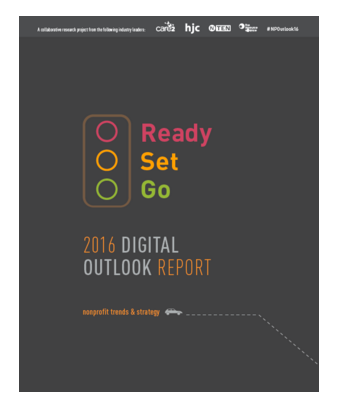 There is no doubt of the power and potential of digital tools for the nonprofit sector.
There is no doubt of the power and potential of digital tools for the nonprofit sector.
Websites, email, crowdfunding, and social media platforms have exploded a nonprofit’s ability to find and connect with potential donors and supporters.
However, there are many questions that remained to be answered, especially around the demonstrable efficacy of online tools in nonprofit work.
Questions for the sector:
What kinds of staffing and budget are you allocating towards digital strategy?
What online tactics (Facebook, email, etc.) are you currently using to reach and engage supporters, and why?
What content are you providing to your constituents, and what types of content will you be exploring in the future?
Are you actually tracking your results to determine the return on investment of your digital efforts?
Care2, hjc, NTEN, and the Resource Alliance have attempted to shed some light on these questions and more with the just-released 2016 Digital Outlook Report.
They wanted to explore solutions to this overarching sector question:
“With limited resources, how do we best leverage the power of the digital environment to make the world a better place?”
 Highlights from the 2016 Digital Outlook Report include:
Highlights from the 2016 Digital Outlook Report include:
Not surprisingly, staff and budget shortages are the sector’s biggest challenges in creating and maintaining a consistent, effective digital strategy. Only 60% of respondents have staff dedicated to online and digital strategy, with social service and community organizations far less likely to have a person solely dedicated to digital.
Smaller organizations may have an advantage when it comes to working together and eliminating silos between marketing, fundraising, and communications staff. The report found that the larger the organization, the more likely it is that development and communications departments do not work together.
Thoroughly understanding your audience works to drive more donations. The average time between first and second gift is more likely to be under two months for organizations who have invested in creating personas and detailed profiles of their constituents.
Visual content and video– the best performing types of content across all digital platforms – continues to be a priority for nonprofits. Almost 70% of nonprofits surveyed are planning a focus on videos in 2016, with the second biggest focus on “website conversion optimization “ – something I would love to see more of across the sector!
Facebook and email marketing are the top two digital communication channels for nonprofits. However, few nonprofits can say WHY they will be prioritizing these two channels over others.
Proving ROI internally is a big challenge for the sector, but despite this, nearly all respondents to the survey fail to track online conversion rates. The nonprofits who responded are increasing their investment in digital tools and tactics year after year, but not able to prove their results.
While I am encouraged by the increase in interest and investment by nonprofits towards digital strategy, the lack of measurement and analysis is troubling. How can the sector possibly justify spending precious staff resources and financial capital on digital channels without being able to track the results? What do you think?
What is your nonprofit’s biggest challenge in the digital space? Do you track your efforts on social media?